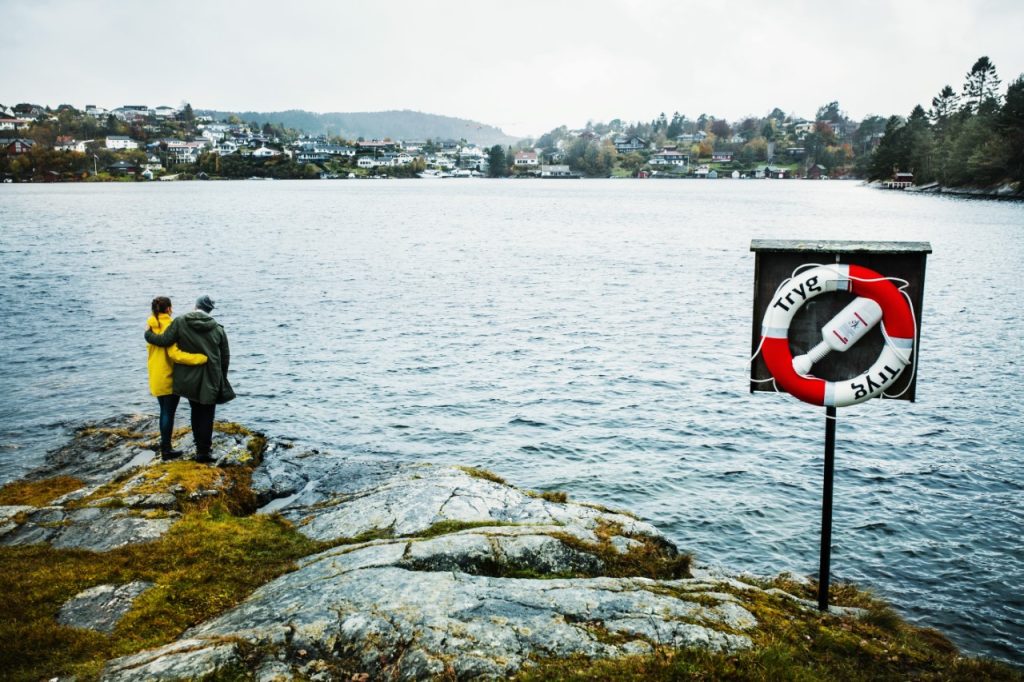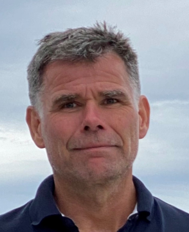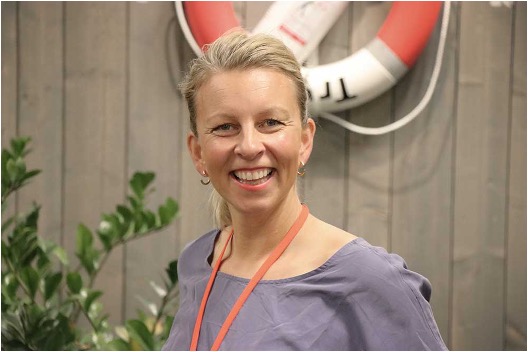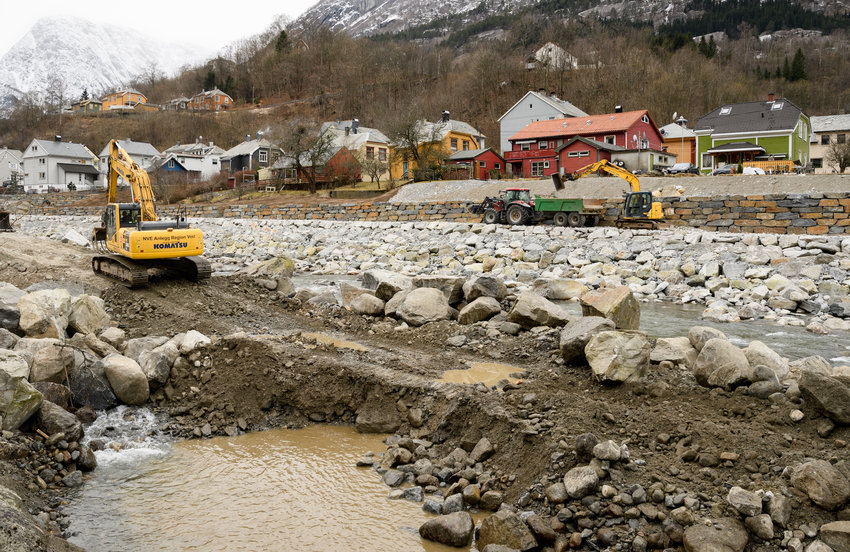The insurance company Tryg is one of the partners in the Resilient Societies node in Climate Futures. We have talked to Karl Ove Aarbu and Linn Beathe Hæreid at Tryg to hear more about the company, how climate change affects their sector, and what they think about the collaboration in Climate Futures.

How does climate change affect the insurance sector?
Tryg is Scandinavias oldest and largest insurance company. They sell insurance to private customers and companies of different sizes. They work with damage liability insurance, of which cars and buildings are the majority. With over 5,3 million customers, they handle more than 1 million cases every year across the Nordic countries. In order for an insurance company like Tryg to be able to offer services to their clients, they have to price them as accurate as possible. They need to get enough money in to be able to pay their clients when damages occur. Climate change leads to more frequent and extreme events, and these affect the risk of the insurance business and makes it harder to estimate how many and how comprehensive the damages can be.

– There has been a trend for many years now that the risk changes with climate change. Perhaps most prominent, as we see it, is the volatility – or fluctuation and variation, in the weather changes significantly. This also means increased risk. If climate change leads to more frequent periods of heavy rain, longer periods of cold or drought, extreme wind etc., we are very interested in understanding this, says Karl Ove Aarbu, Head of Analytics at Tryg. (Photo: private)
Three things are therefore especially important for the insurance business:
- understanding the changes that happen,
- being able to estimate what it will cost them, also called risk pricing,
- using that understanding and information to try to prevent damage.
– There has for instance been an extreme increase in landslides the past few years. They are often triggered by long cold periods and sudden warm periods. It is vital that we understand these things. We might not be able to reduce the risk, but we can reduce the consequences of the incidents, says Aarbu.
How does Tryg face these new challenges?

– Our main goal is to ensure safety for our clients that become increasingly insecure in a changing world. Extreme weather happens more often, 100-year floods come every 20 years instead, but that does not mean that we can sell an insurance that is 5 times as expensive. We need to think about minimising risk in other ways, which is why it is so important for us to understand the weather and how we can work preventatively. All damage is a waste of resources, and we therefore work to minimise and prevent it. That is the most sustainable we can do, says Linn Beathe Hæreid, Sustainability Specialist at Tryg. (Photo: Tryg)
As the biggest insurance company in Skandinavia, Tryg has a large influence and their goal is to become the most sustainable insurance company in the Nordic countries. They do this both “in-house” by working to create a green workplace, and by responsible purchasing and investments. Nevertheless, their most important task is to ensure sustainable insurance. As little damage as possible is the most sustainable.
– The sustainable damage settlements is one thing – that we are concious about choice of materials and repair smarter etc., but when it comes to climate it is about reaching the customers and businesses, helping them to understand what weather will come and which consequences it will have for them. We want to work together to find good solutions that lead to as little damage as possible, says Hæreid.
The collaboration in Climate Futures
Tryg wants to know how climate change affects their basic insurance risk. The insurance company signs contracts with clients for payment, and this ensures that the client is insured for specific events that can affect for example their buildings or cars.
– We estimate the correct price for these insurances by finding out and considering how much damage can potentially be done, and the cooperation within Climate Futures can help contribute to this, says Aarbu.
Which concrete things to you want to see come out of the centre?
– We mainly want to things: to understand the risk, thus enabling us to get the right price for our services, and to prevent and minimise damage and risk for our clients, sayd Hæreid.
Tryg works to translate the language used to talk about climate risk into a practical language that everyone understands so it can be useful. The goal is actual behavioral change with their clients. The company facilitates contingency plans for their clients and works preventatively to minimise risk.
– In Climate Futures we work with climate communication in an interesting way. That is partly what the climate scientists in the centre will help us with, says Hæreid.
One of them is Etienne Dunn-Sigouin, researcher at Climate Futures and NORCE, who helps Tryg become more resilient when facing changing weather and climate.

– We are working together to integrate long-term forecasts, (beyond the range of typical weather forecasts) as well as simulations of future climate, into their risk pricing and prevention initiatives. For example, if there is a predicted high risk of flooding, Tryg can modify the cost of their premiums and advise their customers to move things out of their basements. The goal is to co-produce actionable knowledge for the company, its customers and the insurance sector more generally. (Photo: private)
Tryg want to, among other things, use the seasonal forecasts produces in Climate Futures on a detailed level that enables them to be more concrete in their preventative and advisory work. Hopefully it will then be possible to predict the number of damages in different places based on both forecasts and historical weather.

